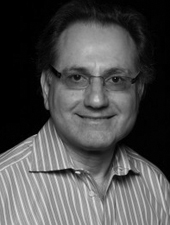Lorenz, P., Baker, B. F., Bennett, C. F., Spector, D. L. (1998) Phosphorothioate antisense oligonucleotides induce the formation of nuclear bodies. Molecular Biology of the Cell, 9 (5). pp. 1007-1023. ISSN 1059-1524
Preview |
PDF (Paper)
Spector Mol Biol Cell 1998.pdf - Published Version Download (926kB) | Preview |
Abstract
Antisense oligonucleotides are powerful tools for the in vivo regulation of gene expression. We have characterized the intracellular distribution of fluorescently tagged phosphorothioate oligodeoxynucleotides (PS-ONs) at high resolution under conditions in which PS-ONs have the potential to display antisense activity. Under these conditions PS-ONs predominantly localized to the cell nucleus where they accumulated in 20-30 bright spherical foci designated phosphorothioate bodies (PS bodies), which were set against a diffuse nucleoplasmic population excluding nucleoli. PS bodies are nuclear structures that formed in cells after PS-ON delivery by transfection agents or microinjection but were observed irrespectively of antisense activity or sequence. Ultrastructurally, PS bodies corresponded to electron-dense structures of 150-300 nm diameter and resembled nuclear bodies that were found with lower frequency in cells lacking PS-ONs. The environment of a living cell was required for the de novo formation of PS bodies, which occurred within minutes after the introduction of PS-ONs. PS bodies were stable entities that underwent noticeable reorganization only during mitosis. Upon exit from mitosis, PS bodies were assembled de novo from diffuse PS-ON pools in the daughter nuclei. In situ fractionation demonstrated an association of PS-ONs with the nuclear matrix. Taken together, our data provide evidence for the formation of a nuclear body in cells after introduction of phosphorothioate oligodeoxynucleotides.
| Item Type: | Paper |
|---|---|
| Uncontrolled Keywords: | Antigens Cell Nucleus HeLa Cells Humans Intracellular Fluid Nuclear Matrix Oligonucleotides, Antisense Thionucleotides |
| Subjects: | bioinformatics > genomics and proteomics > genetics & nucleic acid processing > DNA, RNA structure, function, modification > DNA expression bioinformatics > genomics and proteomics > genetics & nucleic acid processing > DNA, RNA structure, function, modification bioinformatics > genomics and proteomics > genetics & nucleic acid processing bioinformatics > genomics and proteomics bioinformatics > genomics and proteomics > genetics & nucleic acid processing > DNA, RNA structure, function, modification > oligonucleotide |
| CSHL Authors: | |
| Communities: | CSHL labs > Spector lab |
| Depositing User: | Matt Covey |
| Date: | 1998 |
| Date Deposited: | 10 Dec 2012 19:56 |
| Last Modified: | 29 Jan 2015 17:23 |
| PMCID: | PMC25326 |
| Related URLs: | |
| URI: | https://repository.cshl.edu/id/eprint/26341 |
Actions (login required)
 |
Administrator's edit/view item |
